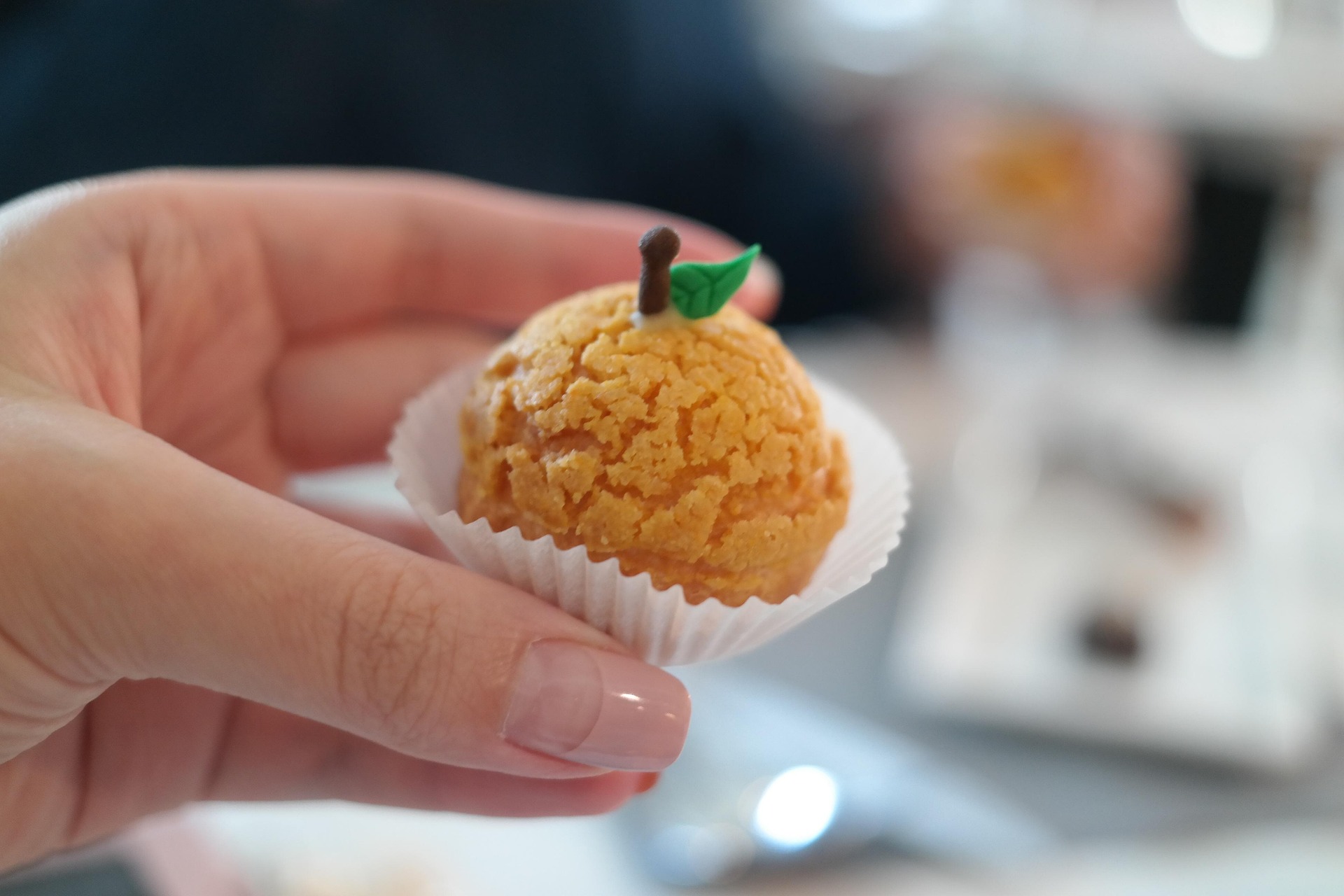Yuzu Kosho: The Japanese Condiment Stealing the Show
Tart, spicy, and deeply aromatic—yuzu kosho is the bold, fermented condiment quietly becoming a cult favorite among chefs and flavor-chasers across the U.S. With its punchy citrus heat and umami-packed depth, this small-batch Japanese paste is turning up in everything from cocktails to roast chicken, adding serious flavor cred wherever it lands.

Tart, spicy, and deeply aromatic—yuzu kosho is the bold, fermented condiment quietly becoming a cult favorite among chefs and flavor-chasers across the U.S. With its punchy citrus heat and umami-packed depth, this small-batch Japanese paste is turning up in everything from cocktails to roast chicken, adding serious flavor cred wherever it lands.
What exactly is yuzu kosho?
Yuzu kosho is a traditional Japanese seasoning made from just three ingredients: yuzu zest, chili peppers, and salt. This fermented paste is a flavor bomb, delivering an intense combo of citrus brightness and spicy heat in a small spoonful. Though it’s been a household staple in southern Japan for generations—especially in the Kyushu region—it’s only recently made its way into the American food scene in a big way.
Unlike lemon or lime, yuzu has a floral, almost piney character with a sour complexity that gives yuzu kosho a distinct edge. The fermentation process amplifies its tangy, salty notes, while the chili brings the heat. Traditionally made with green chilis and unripe yuzu, modern versions also use red chilis and ripe yuzu for a fruitier, deeper finish. You’ll now spot yuzu kosho in upscale restaurants across LA, New York, and Chicago—often used sparingly to spike a vinaigrette or boost a crudo dish. But it’s also making its way into home kitchens, thanks to boutique condiment brands and adventurous home cooks eager to shake up their flavor game.
Cooking with yuzu kosho at home
The magic of yuzu kosho lies in its versatility. Despite its intensity, it plays surprisingly well with a wide range of ingredients, adding layers of brightness and heat without overpowering. A little goes a long way, but the right touch can completely transform a dish. Try whisking it into salad dressings to cut through richness, or mixing it with mayonnaise for a spicy sandwich spread. Swirl it into broth-based noodle soups, use it to season grilled meats, or stir a small amount into olive oil for a killer bread dip. It also works beautifully with seafood—think scallops, salmon, or shrimp—bringing a citrusy kick that’s fresher than your typical hot sauce. And don’t underestimate it as a cocktail ingredient. Bartenders are using yuzu kosho to rim glasses, flavor syrups, or spike spicy margaritas. It gives drinks a clean heat and zesty backbone that adds complexity without sugar overload.
Because yuzu kosho is fermented, it also layers in umami, making it a perfect accent for plant-based dishes. Think tofu, roasted vegetables, or miso-glazed eggplant.
A modern twist on a centuries-old condiment
Yuzu kosho may be rooted in Japanese tradition, but today’s chefs are giving it a major remix. From fine dining tasting menus to food trucks, it’s being reinvented across cuisines. Chefs are pairing it with dishes as varied as fried chicken sandwiches, burrata salads, or even tacos—anywhere you’d want to brighten up rich or fatty flavors.
Food product companies are also catching on. You can now find yuzu kosho-infused aioli, barbecue sauces, and hot honey blends on specialty market shelves. And while traditionalists may stick to the green or red varieties, new blends are introducing lemongrass, garlic, and even smoked salt for added layers.
There’s a reason it’s winning fans in professional kitchens: it checks all the boxes for modern diners—bold flavor, clean ingredients, and a touch of global edge. As more people look to elevate their everyday meals without overcomplicating them, yuzu kosho is becoming a go-to condiment for next-level seasoning.
Where to find and how to store it
Yuzu kosho is still considered a niche ingredient in most mainstream supermarkets, but it’s increasingly available in Japanese and Asian grocery stores, as well as online through specialty retailers. Look for brands like S&B, Marukyu-Koyamaen, or small-batch producers that offer artisanal takes.
It typically comes in small glass jars or squeeze tubes, with a price range between $8 and $18 depending on the brand and size. A jar will last a long time, as only a dab is needed per dish. Once opened, it should be stored in the refrigerator to preserve its flavor and fermentation quality. Some chefs even recommend freezing small portions—like in an ice cube tray—if you don’t use it often. This helps lock in freshness while keeping it accessible for quick use. If you’re into DIY, there are also homemade recipes available, though sourcing fresh yuzu in the U.S. can be tricky. Specialty grocers or online citrus farms sometimes stock it in season (typically late fall to early winter), offering an opportunity to experiment with your own fermented version.
Tips for cooking with yuzu kosho
- Start small: It’s potent, so begin with 1/4 teaspoon and build from there.
- Pair with fatty or rich foods: Think grilled meats, egg yolks, or oily fish—yuzu kosho cuts through richness beautifully.
- Blend into condiments: Mix it with mayo, sour cream, or yogurt for a tangy, spicy dip or spread.
- Add at the end: For maximum flavor, use yuzu kosho as a finishing touch rather than during cooking.
- Store it right: Keep it refrigerated in an airtight container and use within six months for best flavor.
Yuzu kosho is more than just a trendy import—it’s a versatile flavor enhancer that deserves a permanent spot in your fridge. Its punchy balance of citrus and heat brings new life to everything from roasted veggies to cocktails, with just a pinch transforming even the simplest dish. If you’re ready to push your pantry game to the next level, this bold little paste might just become your secret weapon.




